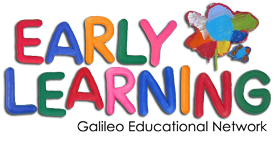
Early childhood research from Harvard University’s schools and hospitals are featured on this site. The Center on the Developing Child was founded in 2006 on the belief children will reach their full potential if they have positive experiences early in life. A vast array of scientific research supports this belief, and the Center hopes to influence policymakers to recognize and implement their findings. All articles within the site are written with the goal of closing the gap between what experts know about the science of early childhood, and what the public understands and does about it.
From Neurons to Neighbourhoods: The Science of Early Childhood Development
National Research Council and Institute of Medicine. (2000). From Neurons to Neighborhoods: The Science of Early Childhood Development. Committee on Integrating the Science of Early Childhood Development. Jack P. Shonkoff and Deborah A. Phillips, eds. Board on Children, Youth, and Families, Commission on Behavioral and Social Sciences and Education. Washington, D.C.: National Academy Press.
A Science-Based Framework for Early Childhood Policy: Using Evidence to Improve Outcomes in Learning, Behaviour, and Health for Vulnerable Children
A Science-Based Framework for Early Childhood Policy: Using Evidence to Improve Outcomes in Learning, Behaviour, and Health for Vulnerable Children. (2007). National Scientific Council on the Developing Child, Harvard University.
This paper outlines how early experiences determine whether a child’s developing brain architecture provides a strong or weak foundation for all future learning, behavior and health. It builds on the analysis of From Neurons to Neighbourhoods: The Science of Early Childhood Development. The basic science of development is summarized in six core concepts. They are:
- Brains are built over time and a substantial proportion is constructed during the early years of life.
- The interactive influences of genes and experience shape the architecture of the developing brain, and the active ingredient in that process is the ‘serve and return’ interactive nature of a child’s relationship with their parents.
- Both brain architecture and developing skills are built from the bottom up, with simple circuits and skills providing the scaffolding for more advanced circuits and skills over time.
- Cognitive, emotional and social capabilities are inextricably intertwined throughout life, and their interactive relationship develops in a continuous process over time.
- Toxic stress in early childhood is associated with disruptive effects on the nervous system and stress hormone regulatory systems. It can damage developing brain architecture and chemistry and lead to lifelong problems in learning, behavior, and both physical and mental health.
This paper also evaluates effectiveness factors in early childhood programming. They are:
- Highly-skilled teachers
- Small class sizes and high adult-to-child ratios
- Age-appropriate curricula and stimulating materials in a safe physical setting
- A language-rich environment.
The Science of Early Childhood Development: Closing the Gap Between What We Know and What We Do
The Science of Early Childhood Development: Closing the Gap Between What We Know and What We Do. (2007). National Scientific Council on the Developing Child, Harvard University.
This report also addresses how early experiences shape a child’s brain architecture, but additionally, stresses the importance of investing in young children and their families as a contribution to a prosperous and sustainable society. It recommends policy changes that support a balanced approach to emotional, social, cognitive and language development, in addition to early intervention for children and families who are at risk. Leading psychologists, pediatricians and economists contributed to the recommendations in this report.
The Timing and Quality of Early Experiences Combine to Shape Brain Architecture
The Timing and Quality of Early Experiences Combine to Shape Brain Architecture. (2007). National Scientific Council on the Developing Child, Harvard University.
This working paper outlines how a environmental conditions and primary influences early in a child’s life contributes to brain architecture, and therefore, the child’s potential to learn. It encourages early childhood professionals and parents to pay attention to so-called sensitive periods, or times when life experiences affect specific brain circuits during specific stages of development.
Building the Brain’s Air Traffic Control System: How Early Experiences Shape the Development of Executive Function
Building the Brain’s Air Traffic Control System: How Early Experiences Shape the Development of Executive Function. (2011). National Scientific Council on the Developing Child, Harvard University.
Much like an air traffic controller at an airport, we must be able to focus, hold on to, and work with information, while filtering out distractions. This important skill is referred to as executive functioning. This working paper outlines how executive functioning skills are developed, and how supporting them pays off in school and in life.
The Science of Early Childhood Development
The Science of Early Childhood Development: This video outlines how the brain is built “from the bottom up”, and how biologically, the brain is set up to be influenced and shaped by experience, from a very young age. It talks about the ‘serve and return’ in childhood development, and how cognitive development and social/emotional development can’t occur in isolation from the other. When young children grow up in emotionally stable surroundings, their brains are literally wired in a way that promotes successful learning.
Early Childhood Program Effectiveness
Early Childhood Program Effectiveness: This video outlines much of what is contained in the Harvard Education paper, A Science-Based Framework for Early Childhood Policy: Using Evidence to Improve Outcomes in Learning, Behaviour, and Health for Vulnerable Children. It suggests that if decision-makers adopt suggestions for improving early childhood programming, the benefits to society would be significant – both in terms of monetary savings and in improvements to the social, emotional and intellectual growth of children.

